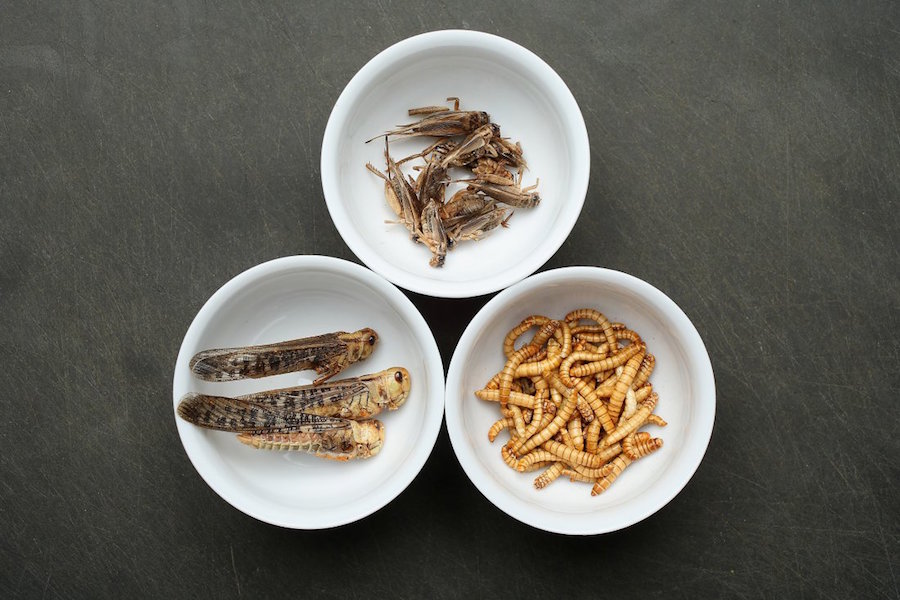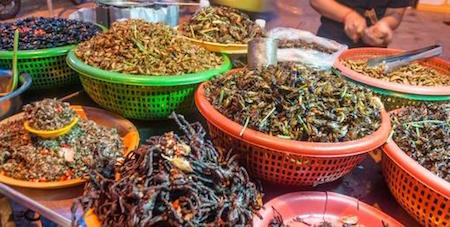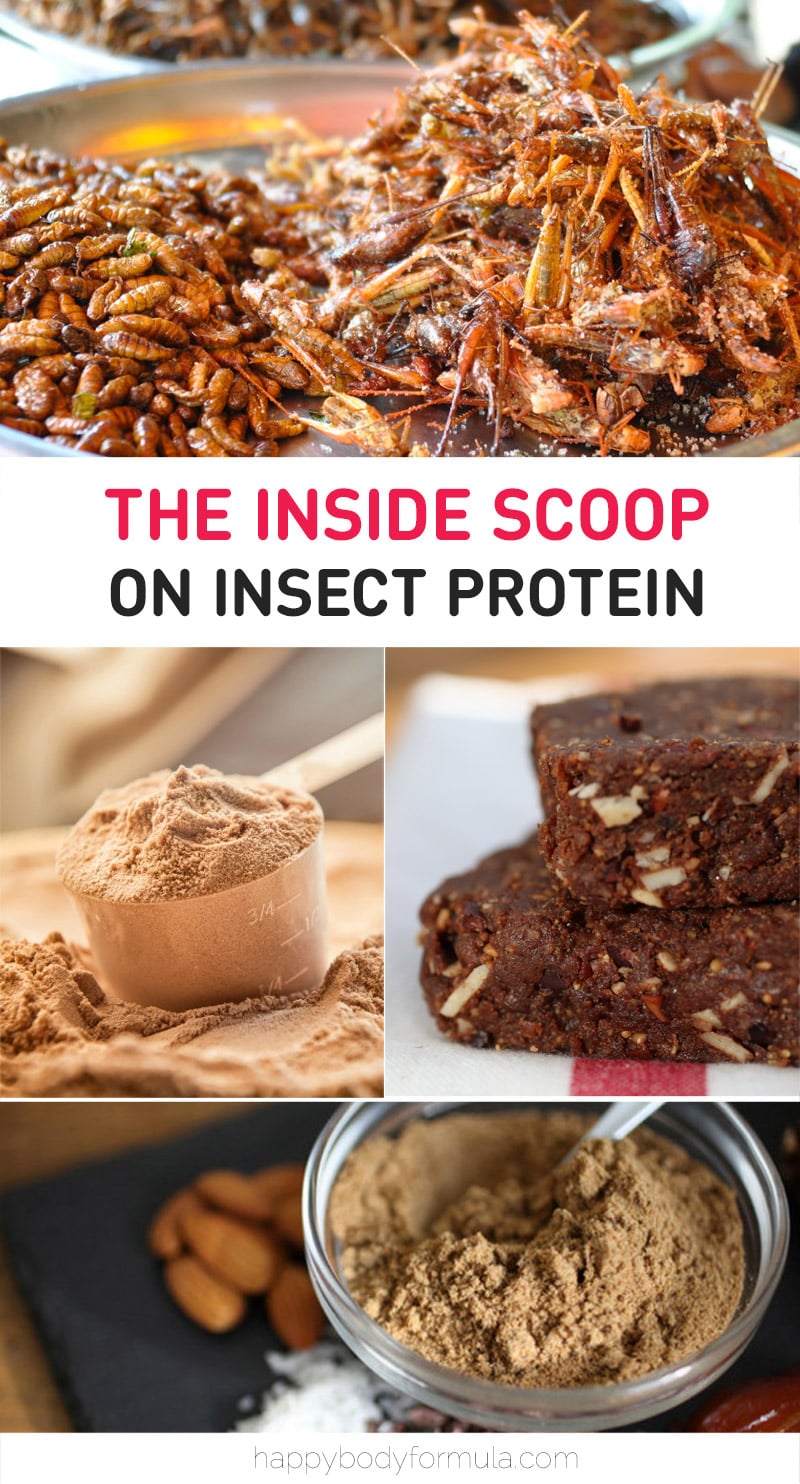Medically review by Kim Langdon

Before you get all creeped out about eating bugs, just give us a chance to explain.
We promise, it's not as eerie as it sounds, assuming the whole thing is brand new to you.
This food trend goes beyond delving into obscure cuisine or eating insects just for the sake of saying you did so. In fact, there are quite a few notable benefits.
More and more, we're seeing cricket flour used in real food-inspired energy bars and ready-to-eat snacks, so it's becoming more commonplace (and tastier!).
I think we can agree on the fact that eating bugs needs to be palatable to consider doing so.
Like any flour, cricket flour - arguably the most common source of insect protein - is an ingredient often used for it's function over its taste.
In any case, this is just what's grown to be popular in western society: many cultures embrace edible insects, and they're regularly included in those people's daily diets.
The main reason that western society doesn't embrace bugs as food is because we have a surplus of other food. Here at Happy Body Formula, though, we are all about variety.
What can we learn from them in terms of nutrition? A lot, evidently.
What types of insects are we talking about?

Cricket flour is arguable the most well-known and widely used source of insect protein, but don't limit yourself to eating just one bug.
In fact, there are around 1,900 species of edible bugs roaming the earth.
It might be simpler to "hunt and gather" your dinner than you think, if you're insect-savvy.
Here's where you can start.
- Beetles. Aquatic beetles, wood-boring larvae, and dung beetles are amongst the more widely known edible species of beetles.
- Caterpillars. The mopane caterpillar harvesting industry in Africa is actually worth $85 million. Pretty crazy, right? Dried mopane caterpillars are known for feeding people throughout times of famine because they have a long shelf life. They contain 48-61% protein, and plenty of calcium, zinc and iron.
- Bees. Japan is especially into eating wasps, which sounds a little out there, but they literally have to import wasps from other countries to supply the demand. Naturally, edible bees do not contain the stinger - ouch!
- Crickets. In 2012, Thailand reported around 20,000 cricket farms. The market is growing! Fun fact: many people prefer the taste of farmed crickets to wild-caught crickets, so if you're going for a delicious delicacy, choose your source wisely.
- Ants. These little guys are considered a delicacy in many parts of the world, whereas western society has mostly deemed them a nuisance. Forget the "can of worms" - you can actually purchase a can of ants if you travel to Thailand.
- Grasshoppers. Did you know grasshoppers contain as much protein as lean ground beef? An estimated 80 different species are consumed worldwide. If you venture to West Africa, you might find roadside stands selling grasshoppers as snacks, much like you would potato chips in the U.S. They're also quite popular in Mexico.
- Locusts. These are one of the easiest insects to harvest as they tend to appear in swarms, making it easy to source a large amount of 'food' at once.
The benefits of insect protein
For starters, bugs are an amazing source of nutrition.
They're packed with protein, healthy fats, fibre, vitamins and minerals like calcium, iron and zinc much like any source of animal.
While nutrition varies widely amongst insects, here are some general rules of thumb regarding quality of nutrition:
- Many insects meet all amino acids requirements (a.k.a. they are a complete protein).
- Edible insects often contain a considerable source of good-for-you dietary fats.
- They are a good source of omega-3 fatty acids.
- Insects are a fantastic source of iron, which many people are deficient in, and can help to prevent anemia, especially in developing countries.
- Eating the entire insect naturally increases intake of bioavailable micronutrient intake.
- Insects generally contain high concentrations of zinc, which is important for developing children and expectant mothers - this is important when considering availability of foods containing zinc, especially in developing countries.
- Insects contain B vitamins such as thiamine (B1) and riboflavin (B2).
- They contain loads of dietary fibre, specifically insoluble fibre which is indigestible, but can actually protect against infection and allergies.
Is it sustainable?

In short - yes. Factory farming is a huge issue in some countries, which compromises the environment and our health.
Insects? Not so much.
Tropical regions have an upper hand when it comes to insect farming: insects are larger thus containing more nutrition; insects stick around all year long making it easier to source food consistently; and insects travel in packs, congregating in large groups, making it simpler to harvest plenty of food at once.
In this example, insect farming is done naturally, with ease and minimal environmental impact.
Considering the lack of commercialization in harvesting insects, consumption is highly ethical and sustainable compared to the consumption and farming of domesticated animals in western society.
- Fewer greenhouse gases and ammonia. Very few insects produce methane, so there is substantially less air and water pollution from raising insects for food. The most popular insects that do produce methane include termites and cockroaches, and they aren't the most appetizing of the bunch anyways.
- They require less food. The fact is that our food also needs food. This is an issue in conventional meat production, and it's why we lean towards choosing grass-fed beef over grain-fed beef. Insects require far less food than cows, pigs, chickens and sheep which offers up both environmental and nutritional advantages over animal farming.
- Their food conversion rate is high. One of the main drawbacks of factory farming isn't only the amount of food required, but the time period in which farmers expect livestock to be a certain size or body weight to slaughter, process and distribute. Insects have a higher conversion rate of nutrition, meaning we don't have to feed them excessive amounts of food to fatten them up before they're ready to eat. Moreover, the demand for more food in general doesn't rise with insects as it does with cattle.
- They require less water. On the same note as food requirements, insects require far less water than cattle, for example, which helps us to conserve.
- Insects require less land. One of the major environmental drawbacks of farming - factory farming, in particular - is the amount of space it requires. As the industry grows (and it is growing!), we are sacrificing more of our land to occupy animals, which naturally leads to more polluted areas.
- It's accessible. Starting up a farm is no small feat. It's a huge investment to raise animals for food. Insect-rearing is a means of food production that is accessible to those even in the poorest countries, and can much more easily be done independently.
How to add insect protein to your diet

Ants are slightly sour, but roasting them brings out loads of flavor. In Colombia, it's common to toast them up with some salt and vinegar.
Almost like potato chips?
Yes, if you can get past the fact that you're eating ants, of course!
Crickets can be found dried, which make them easy to roast or fry before consumption.
They're also ground into flour which can be used for high-protein baking. You can also check out bars like Exo Bar which use cricket protein for a tasty, healthy snack on the go.
Travel! Of course, this is a pretty extreme option strictly to taste new bugs, but it's good to keep in mind when you do travel.
Try the new-to-you cuisine and source out some quality, buggy delicacies on your next trip to a region where insect protein is more commonly embraced.
What do you say? Would you eat bugs? Have you managed to incorporate insect protein into your real food diet? Share with us!
This article was fact checked for accuracy by Dr. Kim Langdon, MD. As always, this is not personal medical advice and we recommend that you talk with your doctor.
Share on Pinterest

References
Kimberly Langdon M.D. is a retired University-trained obstetrician/gynecologist with 19-years of clinical experience. She delivered over 2000 babies to mothers in a suburban Midwestern community.

